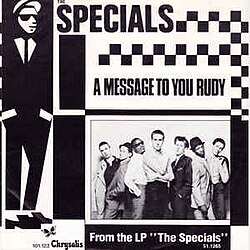 When Fleetwood Mac released “Go Your Own Way” in 1976, the song wasn’t just another single—it was a lightning bolt of emotion carved into vinyl. It was the sound of love unraveling in real time, a confessional anthem disguised as a driving rock tune. Written and sung by Lindsey Buckingham and aimed squarely at his ex-bandmate Stevie Nicks, the track became a cornerstone of the band’s Rumours album and one of the most electrifying breakup songs ever recorded.
When Fleetwood Mac released “Go Your Own Way” in 1976, the song wasn’t just another single—it was a lightning bolt of emotion carved into vinyl. It was the sound of love unraveling in real time, a confessional anthem disguised as a driving rock tune. Written and sung by Lindsey Buckingham and aimed squarely at his ex-bandmate Stevie Nicks, the track became a cornerstone of the band’s Rumours album and one of the most electrifying breakup songs ever recorded.
Nearly five decades later, “Go Your Own Way” still sounds raw, urgent, and utterly human. It’s not just a song about heartbreak—it’s a song about survival. It captures that desperate edge between letting go and holding on, when pride and pain mix together like gasoline and fire.
1976: A Band on the Brink
By the time Fleetwood Mac began recording Rumours in 1976, the band was a storm of personal turmoil. Lindsey Buckingham and Stevie Nicks had ended their long and complicated relationship. Christine and John McVie’s marriage was collapsing. Even drummer Mick Fleetwood was facing his own separation. And yet, they were locked together in studios, forced to make music side by side while their personal lives disintegrated.
It’s almost too poetic to be real—but it was. The band members have since admitted that nearly every song on Rumours was a message, a response, or a cry from one member to another. The album became a diary written in stereo, and nowhere was that tension more explosively felt than in “Go Your Own Way.”
Lindsey Buckingham wrote the song as his personal message to Stevie Nicks. It wasn’t tender. It wasn’t subtle. It was the sound of a man both angry and heartbroken, trying to turn pain into art. From its opening acoustic strum to its final, storming outro, “Go Your Own Way” burns with resentment and longing in equal measure.
The Fire in the Music
“Go Your Own Way” begins with a tumble of guitar and percussion that feels almost chaotic. Mick Fleetwood’s drumming is restless and unpredictable, full of odd fills and crashes that somehow lock into a perfect groove. That’s part of what makes the song feel alive—there’s tension in every note, like it might explode at any second.
Buckingham’s guitar tone is biting and bright, full of sharp edges. There’s nothing smooth or polished about it—it’s aggressive, percussive, almost manic. The rhythm section drives forward like a runaway car, while Christine McVie’s keyboards add just enough melodic lift to keep it from collapsing under its own weight.
And then comes Buckingham’s voice—strained, desperate, emotionally naked. When he sings “Loving you isn’t the right thing to do,” you can hear both accusation and confession. He’s not pretending to be over it. He’s trying to convince himself he is.
That’s what gives the song its power. “Go Your Own Way” doesn’t sound like a breakup that’s settled—it sounds like one still happening, right there in the studio. It’s raw emotion turned into rhythm.
Stevie’s Shadow in the Song
Of course, the most dramatic layer of “Go Your Own Way” is that Stevie Nicks was right there—singing backup on the very song written about her. It’s one of the most surreal ironies in rock history. The woman being told to “go your own way” had to stand at a microphone just feet away, harmonizing with the man telling her to leave.
Nicks has since admitted that she hated some of the lyrics—especially the line “Shacking up’s all you want to do.” She called it a cruel exaggeration of their relationship. But Buckingham refused to change it. That line, for him, captured the bitterness and frustration he couldn’t express any other way.
And yet, that’s part of what made Rumours so extraordinary. Despite their personal pain, the band members didn’t censor each other. They used the music to process what they couldn’t say in conversation. The result was a record that felt painfully honest—and universally relatable.
When Nicks’ soft harmonies glide in on the chorus, they cut right through Buckingham’s anger. Her voice brings warmth and sorrow to his fury. It’s as if she’s answering him without words, creating a dialogue inside the song itself.
The Heart of Rumours
While Rumours would go on to produce a string of hits—“Dreams,” “Don’t Stop,” “You Make Loving Fun,” and “The Chain”—“Go Your Own Way” was the one that truly set the tone. Released as the album’s first single in late 1976, it announced to the world that this was not just another soft-rock band.
This was emotional warfare set to music.
The song peaked at No. 10 on the Billboard Hot 100, but its impact went far beyond chart position. It became an anthem for anyone trying to break free from a toxic relationship or reclaim their own path after heartbreak. The line “You can go your own way” is both a kiss-off and a benediction. It’s not cruel—it’s cathartic. It acknowledges the pain while pointing toward independence.
That duality—anger and liberation—gave the song a depth few breakup songs achieve. It’s both deeply personal and completely universal.
A Masterclass in Production
Behind the emotional intensity, “Go Your Own Way” is also a masterpiece of production. The recording sessions took place at the Record Plant in Sausalito, California, and the band’s perfectionism was legendary. Buckingham was a studio obsessive, known to spend hours layering guitars, tweaking tones, and pushing the limits of analog tape.
The result is a sound that’s simultaneously crisp and unhinged. The acoustic guitars are recorded with bright precision, while the electric solos blaze with distortion and tension. Mick Fleetwood’s drums—recorded with an almost live-room energy—give the song its heartbeat, unpredictable but steady.
And then there’s the mix: those backing harmonies from Stevie and Christine McVie that lift the chorus into something transcendent. The song feels like it’s always on the edge of collapse, yet somehow it never loses control. That balance is part of its magic.
Emotional Catharsis on Stage
“Go Your Own Way” quickly became a centerpiece of Fleetwood Mac’s live shows, and over the years, it’s taken on a life of its own. When performed live, the song often stretches into a full-throttle guitar workout, with Buckingham channeling his heartbreak through frenetic solos.
Watching him play it live—even decades later—feels like watching someone relive their pain and triumph all at once. There’s an urgency that never seems to fade, no matter how many times the band performs it.
And Stevie, standing across the stage, always brings that same haunting energy. When she locks eyes with Lindsey during the song, it’s like the ghosts of 1976 still linger in the air. Their chemistry, their history, their unresolved tension—it all becomes part of the performance.
For fans, that’s what makes it so powerful. “Go Your Own Way” isn’t just a song; it’s a living document of one of rock’s most complicated relationships.
Cultural Impact and Enduring Legacy
Over the decades, “Go Your Own Way” has transcended its original moment. It’s been used in countless films, television shows, and commercials—each time capturing the essence of independence, heartbreak, or both. From Forrest Gump to Guardians of the Galaxy Vol. 3, the song continues to resonate across generations.
Part of that is because it refuses to sugarcoat the pain of breaking free. It’s not a song about triumph—it’s a song about doing what you have to, even when it hurts. That honesty makes it timeless.
And the sound—those bright guitars, that driving rhythm—still feels modern. Many younger artists cite Rumours and “Go Your Own Way” as influences, from Haim to The War on Drugs. The song’s mix of emotional vulnerability and rock intensity has become a template for countless bands trying to balance heart and edge.
The Duality of Freedom
What makes “Go Your Own Way” so enduring is the paradox at its core. It’s a song about freedom that doesn’t sound free. It’s defiant, but also aching. When Buckingham sings “Everything’s waiting for you,” it feels less like an invitation and more like a dare.
That’s the genius of the song—it captures that messy, in-between space after a breakup, when you’re trying to convince yourself you’re okay but still looking over your shoulder. It’s the soundtrack to the emotional hangover that comes with independence.
You can go your own way—but that doesn’t mean it won’t hurt.
Beyond the Rumours
For Fleetwood Mac, “Go Your Own Way” marked the beginning of their transformation from a blues-based rock band into pop legends. Rumours went on to become one of the best-selling albums of all time, and “Go Your Own Way” remains one of its most iconic tracks.
It’s the song that cemented Lindsey Buckingham as a world-class songwriter and guitarist, and it showcased the combustible magic that happens when talent and tension collide. Without the heartbreak, there would be no “Go Your Own Way.” Without the pain, there would be no art.
The Song That Refuses to Fade
Nearly fifty years later, “Go Your Own Way” is still everywhere—on playlists, movie soundtracks, and road trip mixtapes. It’s the rare song that still feels alive every time you hear it, as if the wound that inspired it never quite healed.
It remains one of rock’s purest expressions of heartbreak and resilience, proof that pain can fuel creation and that sometimes the hardest goodbye is the one that sets you free.
Buckingham once said that writing “Go Your Own Way” was the only way he could process what was happening with Stevie. That honesty, that need to turn chaos into beauty, is what keeps the song burning decades later.
So when those opening chords hit and that familiar chorus rings out, it’s not just a song—it’s a lesson in heartbreak, healing, and the courage it takes to keep driving forward.
You can go your own way—but the road will always echo with the sound of where you’ve been.


